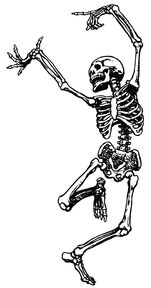|
27/6/2020 0 Comments How To Build Better Bone HealthHave you ever stopped to think about your bones? Until they fracture or hurt, we often don’t. After all, they are tucked away out of view.Your bones form the structure of your body. They provide shape, protect vital organs and the central nervous system, and allow muscles to connect and move us. As well as these better known roles, a hub of endless activity occurs inside our bones. Blood cells are made there. Minerals, like calcium, are stored. Your bones are living, constantly remodelling tissues!
As you can see, bone health is crucial. But sometimes things go awry. As we age, our bones can weaken, increasing the risk of fracture. The fine structure throughout the bone thins out, resulting in brittle bones, and osteoporosis can result. If vitamin D levels are low, softening of the bones can occur. A condition called Paget’s disease of bone causes the bones to weaken and deform. And, of course, the ends of the bones at the joints can become damaged with osteoarthritis. Yet, nature provides the skeletal system with effective ways to prevent illness, balance strength with capacity, and aid repair. Exercise and nutrition form the pillars for bone health. Exercise approaches are multi-pronged, whereas eating aims for optimal nutrition. Weight-bearing and resistance exercises are the best for your bone health. Weight bearing exercises are those which bear your own weight and work against gravity. These include activities such as jogging, dancing, tennis, hiking and climbing stairs. Resistance training requires our muscles to work against force. As we do, the pressure exerted encourages bone tissue growth. To achieve increased bone strength, the mechanical load applied needs to exceed those of everyday activities. Increasing the load incrementally is the best approach. As fitness and core stability build, so too will bone and muscle strength. This improves not only skeleton health, but the balance required to prevent falls. Then we must look to foods; consuming those rich in bone-building nutrients, and avoiding those that have a weakening affect. Higher protein intake in older women can increase bone mass density and reduce fracture rates. Balance protein with plant foods packed with complex carbohydrates containing bone-building nutrients like fibre, vitamins and minerals. Avoid refined carbohydrates – such as sugar, and a high intake of saturated fat. These foods can decrease bone mineral density by reducing calcium absorption. Instead, choose wholefoods and polyunsaturated fats such as the omega three fats found in oily fish. A range of micronutrients are needed for healthy bones; these include calcium, copper, magnesium, manganese, vitamins D and K, and zinc. Aim for five or more daily servings of fruits and vegetables, and get a healthy amount of sun exposure. Your chiropractor understands bone function and health. They can advise you on how to assess the health of your bones and improve their strength, naturally. Picture: Unknown Author Pinterest
0 Comments
Leave a Reply. |
AuthorAdam's Back is a team of dedicated complimentary health professionals. Our aim is to support you in finding drug-free solutions for better health. Archives
July 2024
Categories |
Search by typing & pressing enter


 RSS Feed
RSS Feed